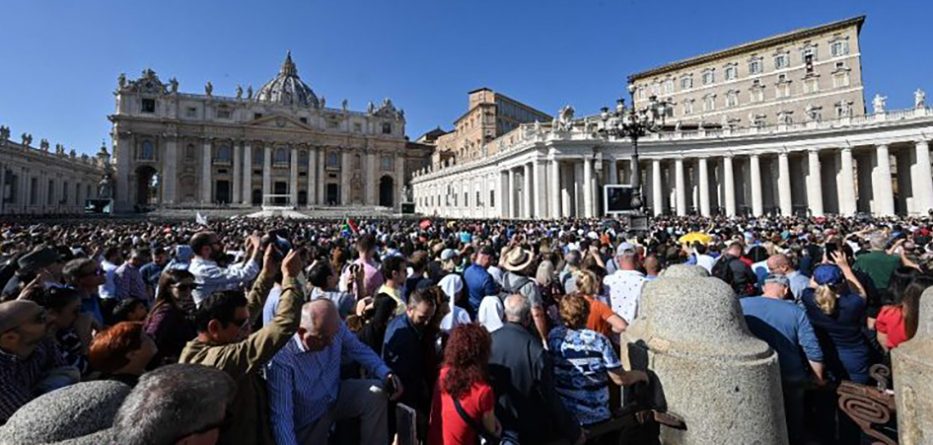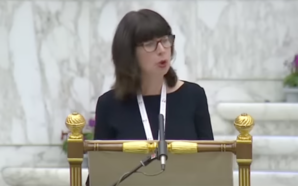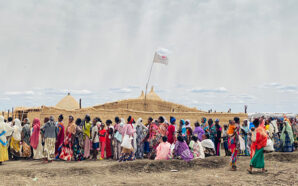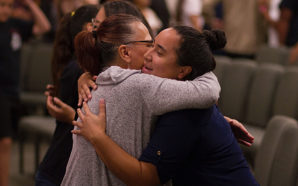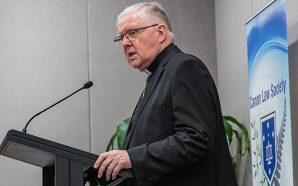Some quick answers to a nagging question
There’s nothing “irredeemably flawed” about the Catholic Church, in spite of what its critics say.
Firstly, because ‘flaws’ are part of the human condition, and secondly — this is tongue-in-cheek — because Christ’s ‘redemptive action’ touches everything, even the Roman Catholic Church.
But more seriously now, we are witnessing the slow and total collapse of one form of church government — the Vatican monarchy — a system which oppressed Catholics for over a thousand years.
The kicking and screaming we hear is from those who have a vested interest in its carrying on.
Therefore, it is this form of Church government which is disintegrating, not the community of the faithful. Christ said that his Church, the community of believers, would stay firm forever.
But he made no such promises about Church government.
There’s no denying that when governments totter and fall, the whole country is in disarray. Take a look at Afghanistan today.
Go back a little in history and consider Russia in 1917: the country had lost a major war; the Tsar and his family were in captivity; and the country was being ruled by a group of fanatical revolutionaries, who didn’t know the second thing about running a country.
It took imperial Russia almost four years of bloody civil war to settle down and become the Soviet Union.
There are similar examples from the French Revolution, the collapse of the Mughal Empire in India, and almost every nation where one government is replaced by another.
The old saying rings true, “When two elephants fight, it’s the grass beneath which gets crushed.”
Violent transitions aren’t new to the Church either. In the great Schism [1054] the Pope and the Patriarch of Constantinople excommunicated each other, a division between Catholic and Orthodox which has lasted until today.
Through the 16th and 17th centuries, the violent “wars of religion” between Catholic and Protestant convulsed most of Europe.
On the Catholic side, it was only the Council of Trent [1545-1563] which settled points of doctrine and liturgy, and usually by force.
The question of jurisdiction had to wait another century for the Peace of Westphalia [1648].
Righteous action more important than right doctrine
So is the Church as we know it, on the verge of collapse? Probably yes, for this Church, the post-Tridentine Church, has passed its “sell by” date.
The paedophile scandals in the churches of Europe and America, and their cover-up by the hierarchy, have revealed to us all just how rotten the whole structure of the celibate clergy is.
Pope Francis‘ cleansing of the “Augean stables” — the Vatican financial institutions — have told us what a pretence the following of Jesus poor has become.
As the Catholic communities of Asia, Africa and Latin America grow to maturity, they demand a theology and a liturgy in mesh with their own cultures, and not the Eurocentric form taught in most seminaries.
The Church is a global entity, and can no longer be controlled from one city, even one as historically significant as Rome.
In other words, the future of the Catholic Church lies in pluriformity, not in uniformity.
The very word ‘catholic’ [kat’holos’] means ‘universal’, and Roman Catholic is a contradiction in terms.
This is what Pope Francis [“the man from a far country”] has realized, and slowly but surely he is moving to achieve his objectives.
Through earlier synods, he has encouraged participation, even dissent.
He wants everyone to speak out, discuss, express their points of view.
He has also encouraged an active involvement of the faithful with the poor, the homeless, refugees and those stricken by wars and persecution.
His encyclical on ecology and climate change has been hailed by men and women of all persuasions.
He considers righteous action [orthopraxis], more important than right doctrine [orthodoxy].
In this, he is striking different from his predecessors, who clamped down on and silenced theologians who thought “out of the box”.
This is what “synodality” means – “walking together with” — a word precious to the present pope, for it implies that the “pilgrim Church” belongs to all, not just the hierarchy.
This means, the Church belongs specially to the poor, to the young, to women, to the laity. In this multi-religious world, we may add synodality encourages dialogue between faiths.
“Collegiality” implied bishops acting in concert. A word dear to Vatican II. It has now been displaced, and looking at the way so many bishops behave, we can quietly thank God. Synodality goes far beyond.
And gradually and deliberately, Francis has chosen as cardinals men from the margins of the Church, who will implement his new vision of the Church after he has gone. Men who are not careerists, but — in his inimitable words – “smell of the sheep”.
This then is Pope Francis’ vision. It is such a game-changer that no wonder it is being bitterly opposed by those who have benefited from the ancien regime.
But all those who believe that Christ’s Spirit guides and supports his Church rest confident.
For flawed though his Church may be, yet it is his “…chosen people,… claimed by God for his own, to proclaim the triumphs of him who called us out of darkness into his marvellous light.” [1 Peter 2.9]
Myron J. Pereira, a Jesuit author based in Mumbai, writes regularly on topics of religious, cultural and socio-political interest.
Reproduced with permission from La Croix International and Myron J. Pereira.




